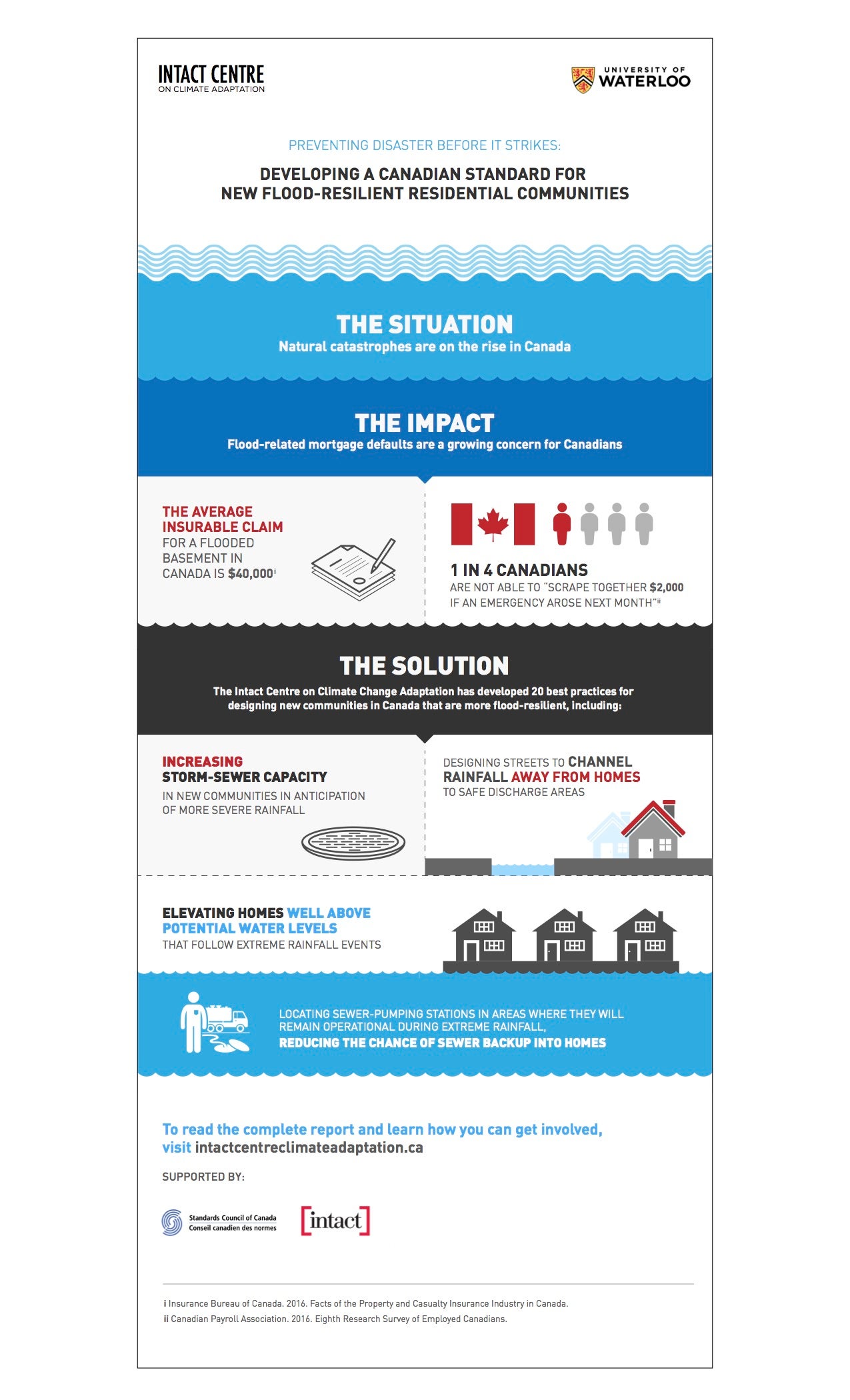The Intact Centre on Climate Adaptation (ICCA) has a launched a new report Preventing Disaster before It Strikes: Developing a Canadian Standard for Flood-Resilient Residential Communities.
Key Findings and Recommendations from the report:
THE SITUATION: Natural catastrophes are on the rise in Canada
• Catastrophic insurable losses borne by property and casualty insurers in Canada have more than doubled every five to 10 years since the 1980s (Insurance Bureau of Canada [IBC])
• From 2009 to 2015, federal expenditure on the Disaster Financial Assistance Arrangements (DFAA) program was more than in the previous 39 fiscal years combined
• DFAA’s spending on floods was the highest, representing 75% of all weather-related expenditures
THE IMPACT: Flood-related mortgage defaults are a growing concern for Canadians
-
1.7M Canadian households (19% Canada’s population) are at risk of riverine and overland flooding (IBC)
-
After July 2013 flooding in the GTA, the average insurable claims were $40,000 (IBC)
-
Where repeated flooding has occurred, flood insurance coverage may be limited
-
Almost half of working Canadians are living paycheque to paycheque, and 1 in 4 Canadians are not able to “scrape together $2,000 if an emergency arose next month”
A SOLUTION: In consultation with over 100 municipal stormwater experts, engineering consultants, developers, homebuilders and other stakeholders nationally, the Intact Centre on Climate Change Adaptation has developed 20 best practices for designing new communities in Canada that are more flood-resilient. These include:
-
Not building new homes in floodways, where flood risk is the highest
-
Increasing storm-sewer capacity in new communities in anticipation of more severe rainfall
-
Designing streets to channel rainfall away from homes to safe discharge areas
-
Elevating homes well above potential water levels that follow extreme rainfall events
-
Locating sewer-pumping stations in areas where they will remain operational during extreme rainfall, reducing the chance of sewer backup into homes
